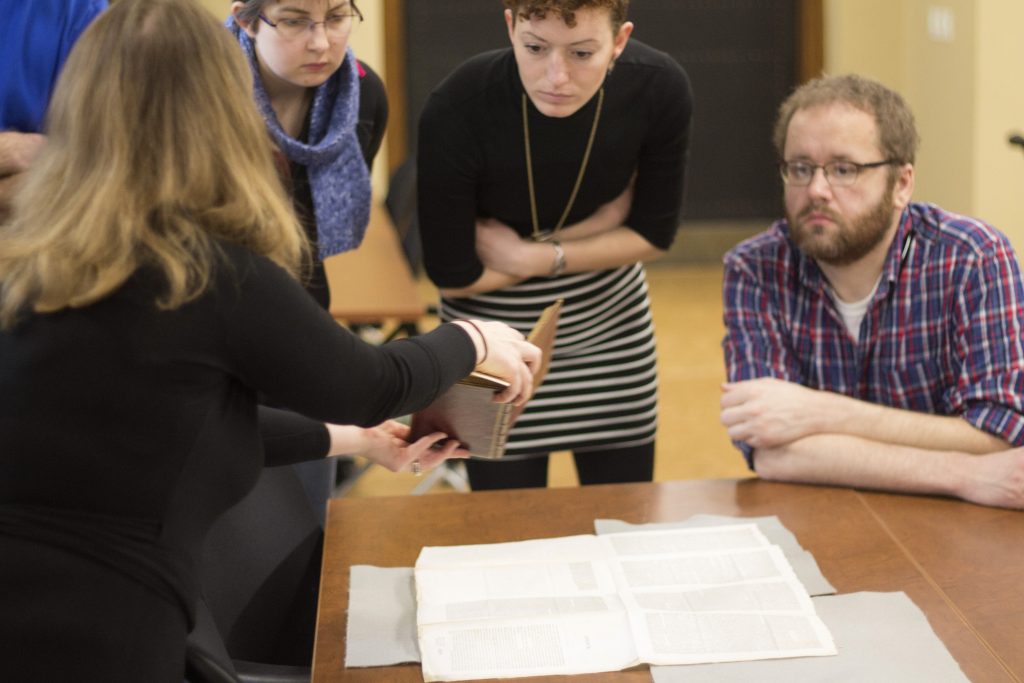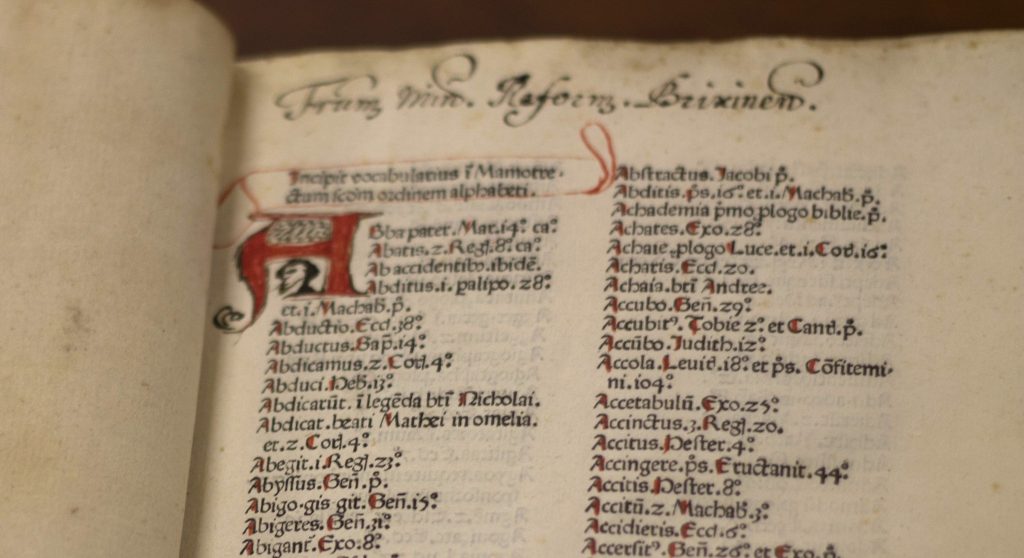
This semester the Rare Book Collection was thrilled to host a visit from graduate students in Dr. Ryan Shaw’s INLS 550: Reading the History of the Book course. We gave them a tour through material book history, heard about their researches in RBC’s reading room, and let them get up close and personal with some excellent teaching examples from the Collection. Books and other items were laid out at different stations, exposing students to topics such as the transition from manuscript to print, the differences between hand-press and machine-press books, binding styles and practices, paper, typography, format, early indexing systems, and non-Western book traditions.
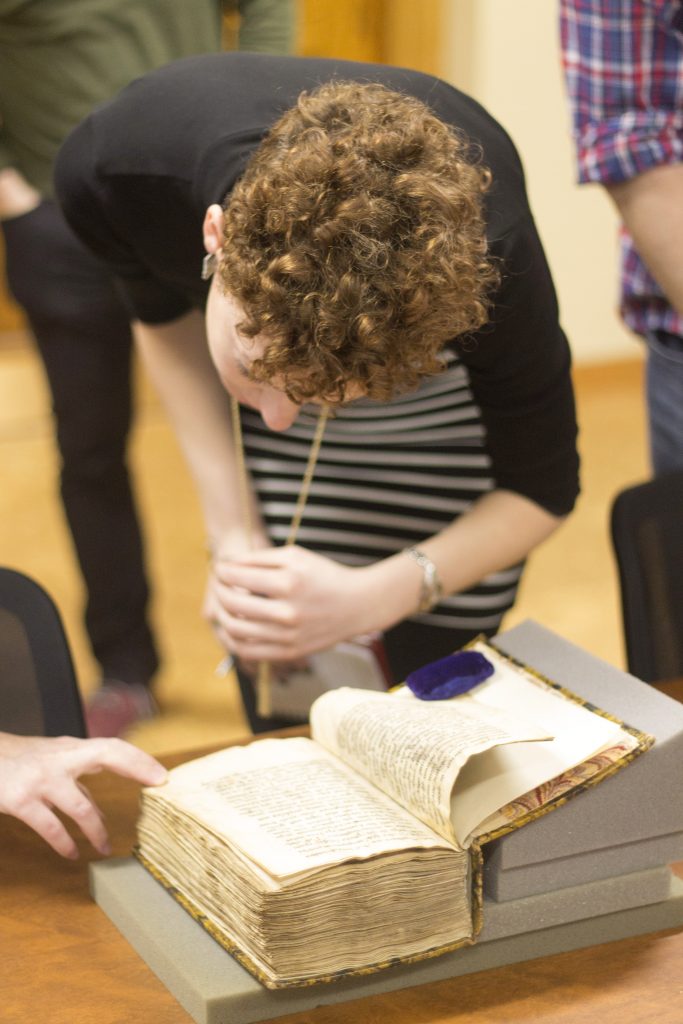
The students examined a Latin manuscript of Spanish origin, written in 1173 in north Castile or Navarre. This manuscript, on parchment, features rubrication, pricked margins, and an ornamental initial.
Rare book research librarian Emily Kader described the process of making paper by hand and showed the students an example of a watermark with the help of a light sheet.
A volume from the Incunabula collection showed the students an early example of a concordance. This book was meant for use by the clergy and contains explanations of difficult words in the Bible. It also features capital spaces left by the printer, here filled in by hand in red, a tradition held over from medieval manuscript culture.
Emily Kader explained the concept of bibliographic format showing a bound octavo volume alongside an unbound pamphlet made up of one sheet of paper, that had been printed and folded into an octavo gathering.
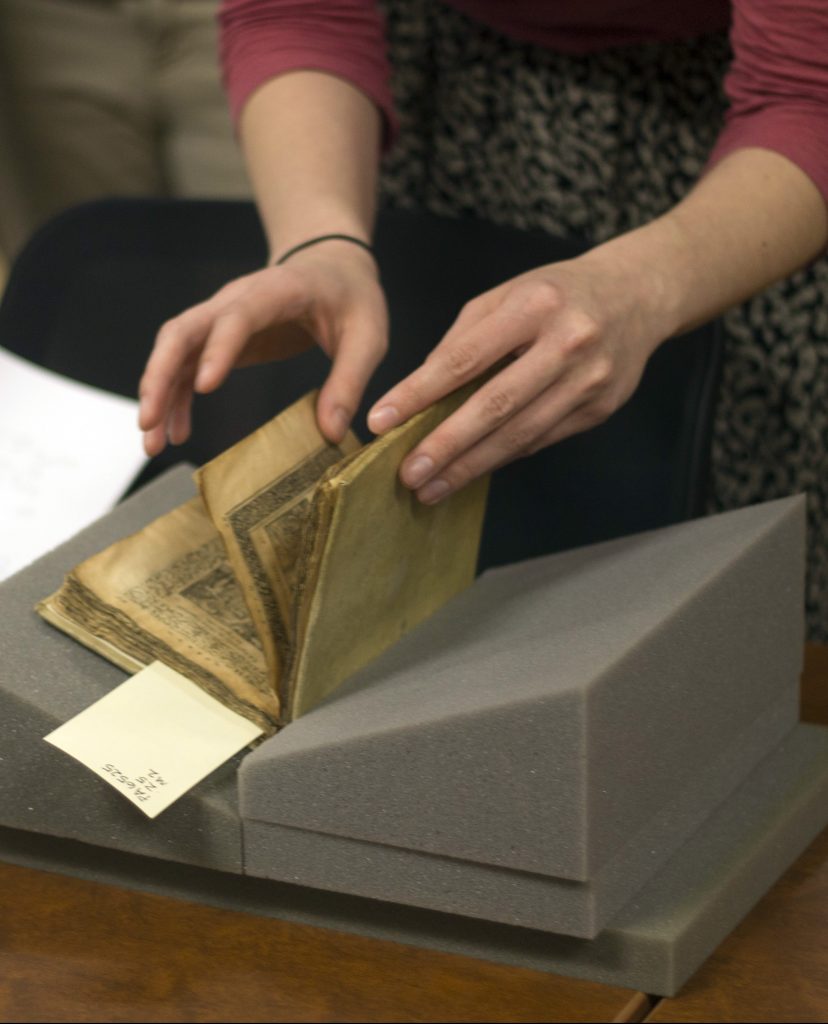
A 1584 edition of Ovid’s Metamorphoses provided the students with an example of a book containing an early modern index.
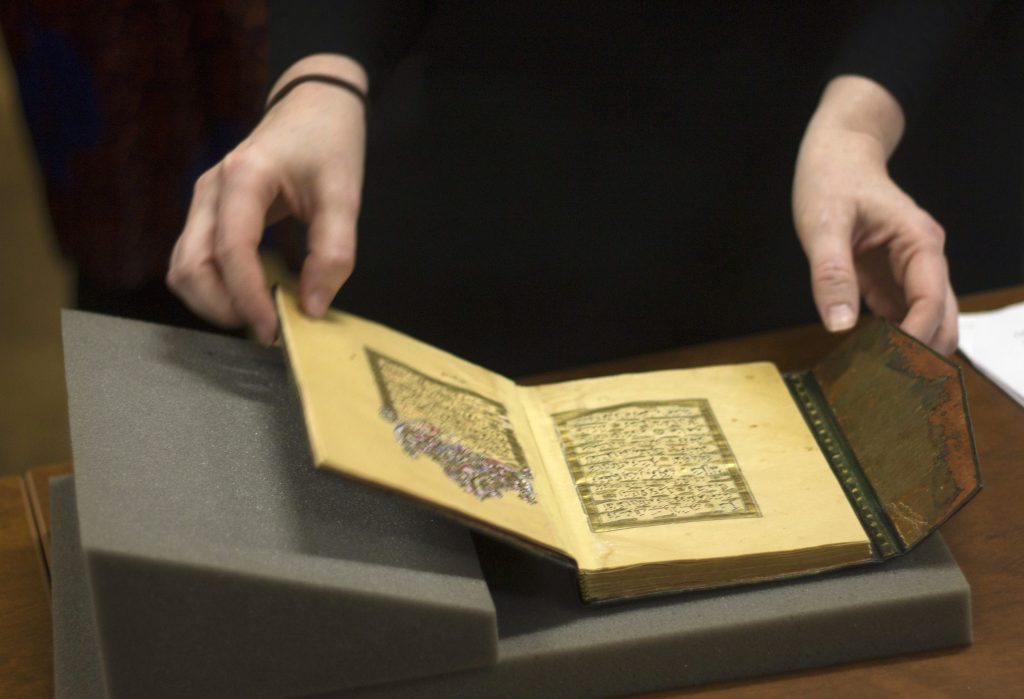
A nineteenth-century manuscript containing Islamic prayers, decorated with vivid pigments and gold leaf allowed the class to see a traditional type of Arabic binding. This style of binding features a flap that extends from the back cover, folds over the book’s fore edge, and tucks under the front cover of the book.
Graduate student Kathleen Monahan helped the students navigate the Liber Chronicarum, better known as the Nuremberg Chronicle, of 1493. The students examined the book’s woodcuts and were able to locate an image depicting Pope Joan.
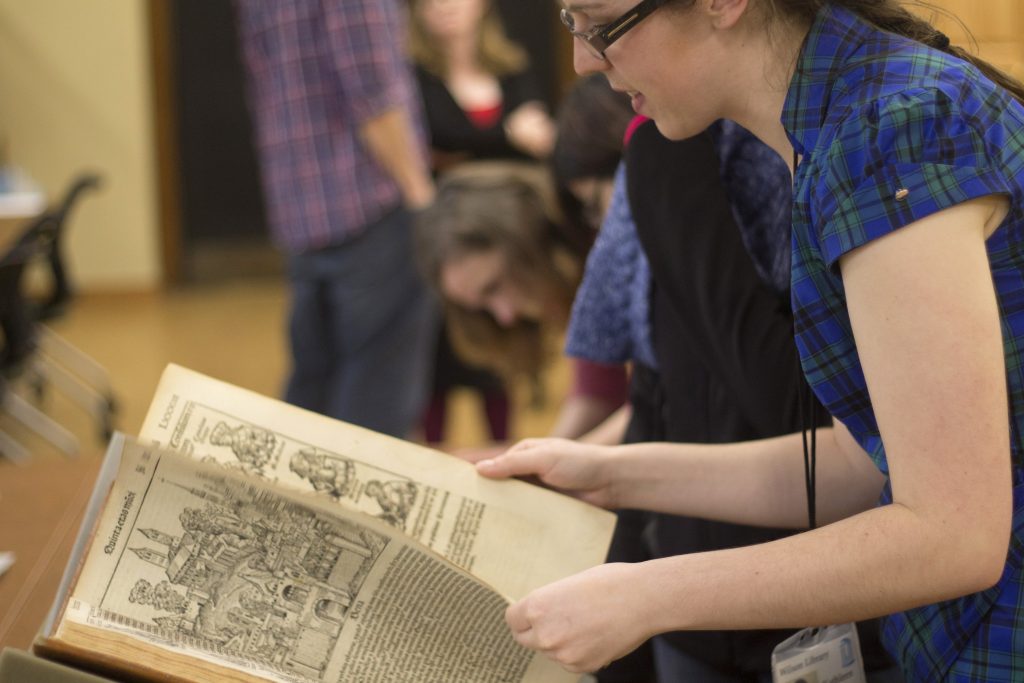
The Nuremberg Chronicle provided early modern readers with an illustrated history of the world as it was known in Europe in the fifteenth century.
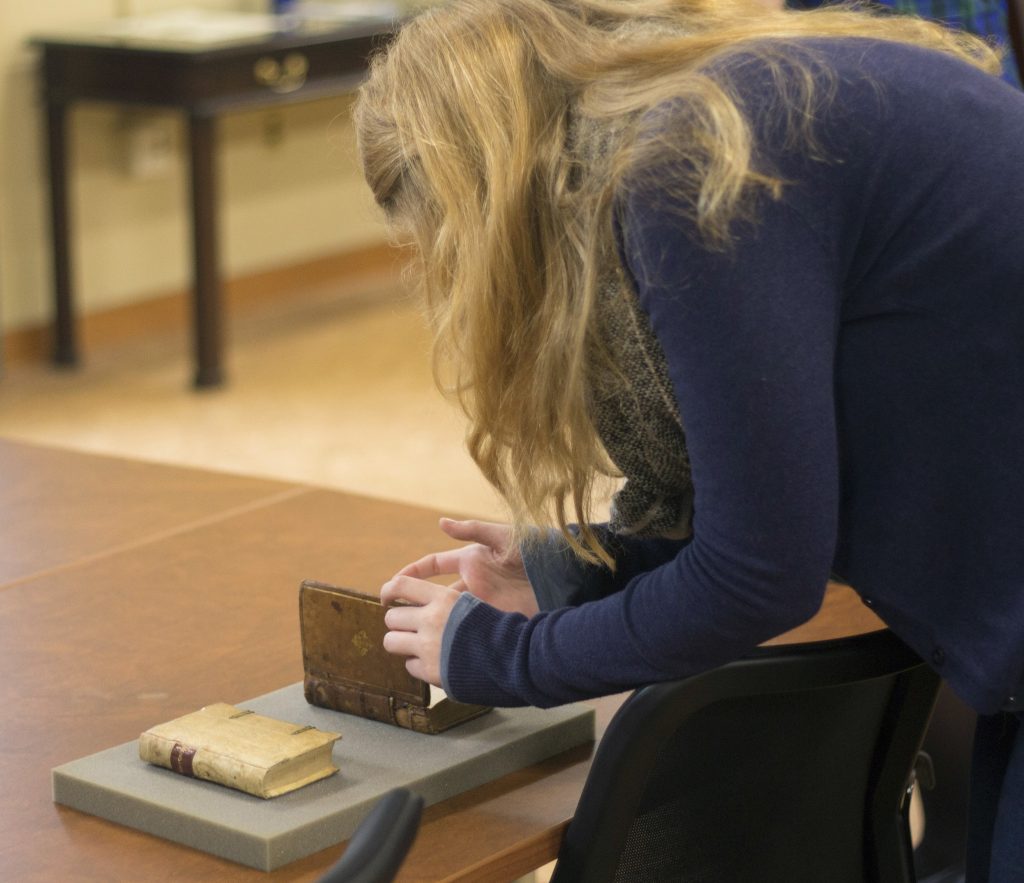
The students compared different styles of binding, here with two copies of the same edition, one bound by a former owner in pigskin, the other bound by a former owner in calf.
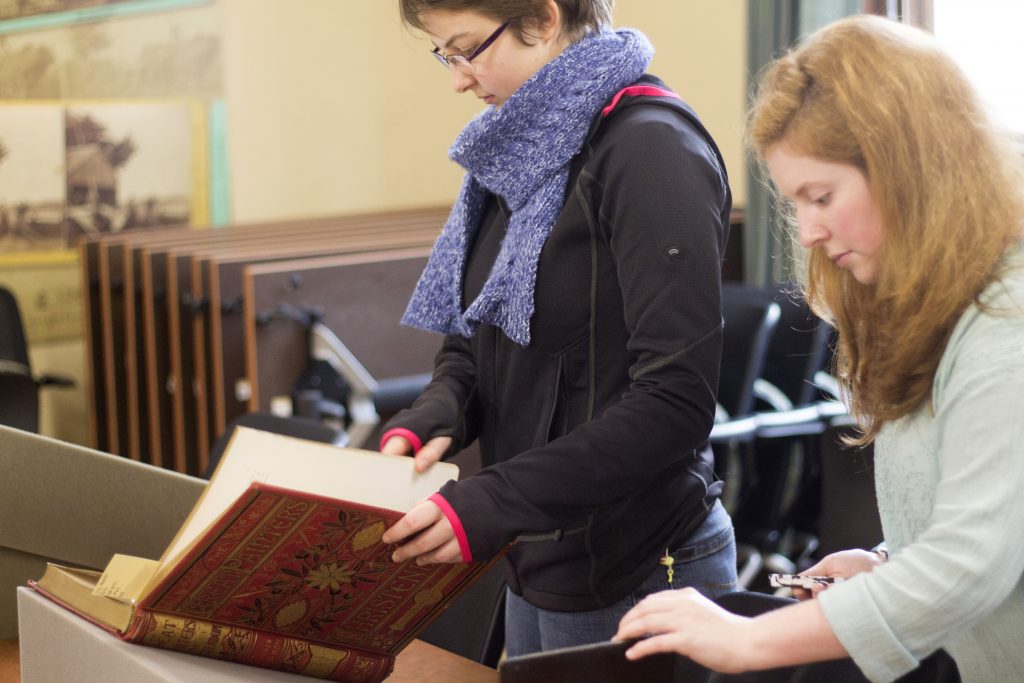
The students also examined a volume from the RBC’s Victorian Bindings Collection, a fine example of the late nineteenth-century innovation of decorated publisher’s bindings.
We welcome classes with relevant interests to visit the Rare Book Collection and integrate its holdings into their curricula. Teachers and students who are interested in using the RBC for teaching or research can get in touch with us at wilsonlibrary@unc.edu

